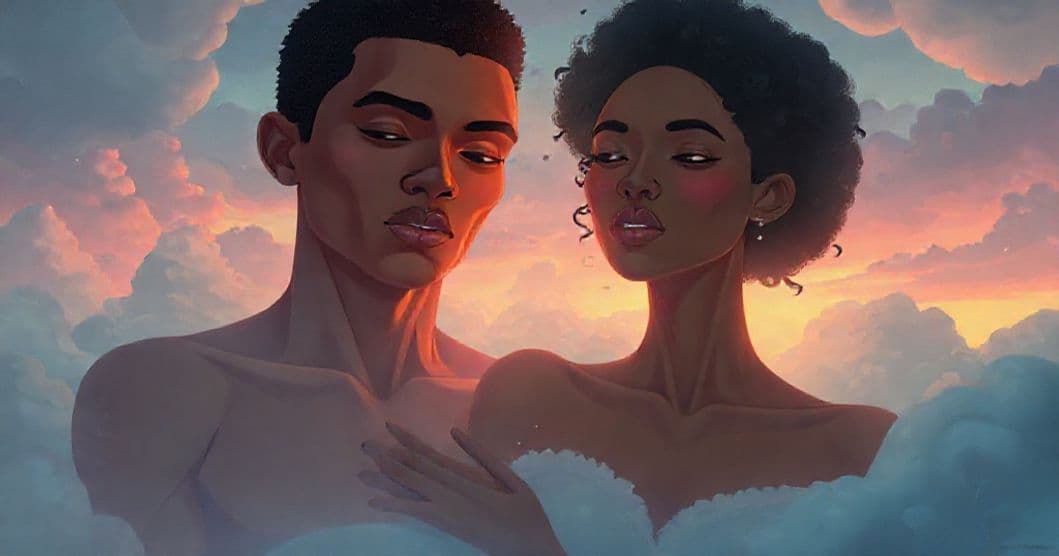Part 1: Dream Presentation
Dreams often serve as windows into the unconscious mind, revealing truths we may not consciously acknowledge. In this vivid dream experience, the dreamer awakens with a profound sense of transformation: shifting from their familiar self to embodying a figure perceived as 'white'—a transformation that carries both emotional intensity and a yearning to transcend their current identity in waking life. The dream unfolds in a sunlit field of silver-lavender grass, where the dreamer’s skin lightens, features soften, and a new sense of grace emerges. This new form is described with both detachment and belonging, as if the dreamer has temporarily stepped into a different self. The encounter with kind, blurred figures and the lingering wish to 'be that girl every day' suggest deeper emotional currents at play.
The dreamer’s journal entry captures the surreal nature of this transformation, noting the shift in appearance and the emotional weight of the experience. The sensory details—the metallic scent, the shimmering grass, the unfamiliar grace of movement—ground the dream in visceral reality, making the psychological shift feel both immediate and transformative. The desire to 'actually become one in real life' reveals a longing that extends beyond the dream state, hinting at waking life issues related to self-acceptance, cultural identity, or unmet emotional needs.
Part 2: Clinical Analysis
Want a More Personalized Interpretation?
Get your own AI-powered dream analysis tailored specifically to your dream
🔮Try Dream Analysis FreeSymbolic Landscape: The Transformation Archetype
The core symbol of transformation into a 'white girl' invites exploration of identity archetypes. In Jungian psychology, the archetype of the 'shadow' represents aspects of ourselves we disown, while the 'anima/animus' reflects the opposite gender within us. However, this dream transcends simple gender transformation, introducing racial identity as a central theme. The color white in dreams often symbolizes purity, innocence, or a desire for something perceived as 'better' or more socially valued—particularly in contexts where racial identity carries cultural significance.
The act of recording the dream in a journal represents the dreamer’s attempt to externalize and process an inner experience. The drawings mentioned in the original post (not visible here) likely served as visual anchors for the dreamer’s emotional state, capturing the essence of their transformation. The field setting, with its silver-lavender grass and metallic scent, suggests a liminal space—neither fully real nor fully dream, a threshold between conscious and unconscious states where identity can shift.
Psychological Undercurrents: Identity, Desire, and Cultural Context
Freudian theory might interpret this transformation as a displacement of unconscious desires—perhaps a longing for social acceptance, privilege, or a different self that feels more 'valid' in certain contexts. Jungian analysis would frame this as a projection onto the collective unconscious, where racial identity symbols carry cultural and historical weight.
The dream’s emotional tone—both detachment and profound belonging—suggests a complex relationship with the self. The 'white girl' figure may represent a cultural ideal or a version of self that feels more authentic in certain social contexts. In contemporary discussions of racial identity, such dreams can reflect internalized racialization, where individuals develop a sense of self in relation to dominant cultural norms.
Emotional and Life Context: Unpacking the Longing
The dreamer’s statement, 'I wish I could actually become one in real life,' reveals a desire that extends beyond the dream state. This longing may stem from feelings of marginalization, lack of belonging, or a cultural environment where the 'white' identity is associated with privilege, acceptance, or social power. Alternatively, it could represent a more abstract yearning for transformation—personal growth, overcoming limitations, or embracing aspects of self previously denied.
The dream’s timing and context matter: if the dreamer has recently encountered discussions about race, identity, or social justice, these could have triggered the unconscious exploration. The emotional intensity of the dream suggests it is not merely about physical transformation but about emotional states tied to self-perception.
Therapeutic Insights: Self-Reflection and Integration
This dream offers valuable opportunities for self-discovery. First, journaling about the dream (as the dreamer did) is an excellent therapeutic practice, as it externalizes inner experiences. The dreamer might benefit from exploring the specific cultural or social contexts where they feel their identity is limited.
Reflective questions could include: 'What aspects of myself do I wish to transform?' and 'What privileges or limitations am I associating with this identity?' By separating the symbolic desire from the literal (since physical transformation is impossible), the dreamer can focus on psychological growth—integrating previously disowned aspects of self.
Therapeutic techniques like dream reprocessing or journaling could help unpack these feelings. The dream’s message may be that the dreamer’s sense of self is fluid, and exploring the 'white girl' figure as a metaphor for desired qualities (kindness, acceptance, grace) rather than literal identity shift can lead to greater self-compassion.
FAQ Section
Q: What does it mean to dream of transforming into another race?
A: Such dreams rarely indicate literal racial change. Instead, they often reflect unconscious desires for self-transformation, social belonging, or integration of disowned aspects of self, particularly if the target race carries cultural significance.
Q: Is this dream a sign of internalized racism?
A: Not necessarily. Dreams reflect the unconscious, not conscious beliefs. This could indicate a desire for self-growth, exploration of identity, or response to cultural messages about race and identity.
Q: How can I process this dream therapeutically?
A: Journaling, symbolic work, and discussing the dream with a therapist can help explore underlying emotions. Focus on identifying what qualities the 'white girl' figure represents for you, not literal identity change.
